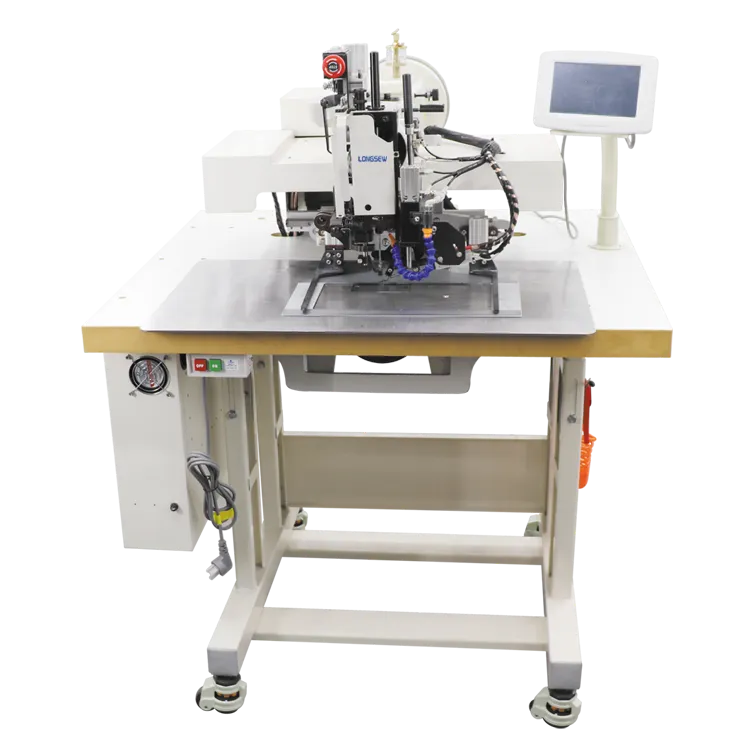DIY Guide to CNC Sewing Machines for Creative Fabric Projects and Innovative Designs
DIY CNC Sewing Machine The Future of Custom Fabrication
In the ever-evolving world of crafting and manufacturing, innovation plays a key role in enhancing efficiency and creativity. One such revolutionary tool is the CNC (Computer Numerical Control) sewing machine, which is swiftly making waves in the sewing community. This article delves into the concept of DIY CNC sewing machines, exploring their benefits, design considerations, and the creative possibilities they unlock for hobbyists and professionals alike.
Understanding CNC Technology
CNC technology refers to the use of computers to control machine tools. In traditional sewing, the process relies heavily on manual labor, skill, and patience. However, CNC sewing machines automate this process, allowing for precision and repeatability in sewing tasks. At its core, a CNC sewing machine uses software to interpret design files—often created using CAD (Computer-Aided Design) programs—translating them into specific movements of the sewing machine.
Why Build a DIY CNC Sewing Machine?
Creating a DIY CNC sewing machine can be incredibly rewarding for several reasons
1. Customization Building your machine allows you to tailor its features to your specific needs. Whether you're into quilting, apparel production, or intricate embroidery, you can adapt your machine to suit your projects.
2. Cost-Effectiveness Commercially available CNC sewing machines can be quite expensive. A DIY project can significantly reduce your costs, especially if you already have some of the necessary tools and components.
3. Learning Experience Constructing your CNC sewing machine offers a unique learning opportunity. You'll gain hands-on experience with electronics, programming, and mechanical systems that will enhance your skills and knowledge.
4. Creativity Unleashed Once your CNC machine is up and running, the possibilities are vast. You can experiment with complex patterns, create customized fabric designs, and work more efficiently than ever.
Components Needed for a DIY CNC Sewing Machine
cnc sewing machine diy

Building your CNC sewing machine requires a careful selection of components
1. Frame A sturdy frame is essential for stability. Materials such as aluminum extrusions or wood can be used to construct the machine base.
2. Stepper Motors These motors offer precise control over the sewing head's movement. Selecting high-quality stepper motors is crucial for ensuring accuracy.
3. Control Board This acts as the brain of your CNC machine. Popular options include Arduino-based boards, which are programmable and user-friendly.
4. Software For controlling your CNC machine, you’ll need software to generate G-code from your design files. Software like Inkscape or Mach3 can facilitate this process.
5. Sewing Machine Head Depending on your project, you can repurpose an existing sewing machine or purchase a dedicated sewing head that fits your design.
Getting Started
Once you have gathered all the necessary components, it's essential to follow a step-by-step assembly guide. Various online communities and forums can offer insights and support to streamline your building process. After assembling the machine, you’ll need to calibrate it and install the software to ensure smooth operation.
Conclusion
A DIY CNC sewing machine can revolutionize the way you approach sewing and fabric design. With the ability to create intricate patterns and automate repetitive tasks, these machines enhance creativity while saving valuable time. By building your own, you embark on a rewarding journey of learning and innovation, setting the stage for endless possibilities in your sewing projects. Whether you are a beginner or an experienced sewist, a DIY CNC sewing machine can open doors to a new realm of creativity in the textile arts. Embrace the technology, and let your imagination run wild!
-
Leather Sewing Machine: The Industrial Standard for Tough MaterialsNewsJul.18,2025
-
Sail Making Machine: Heavy-Duty Stitching for Industrial and Marine NeedsNewsJul.18,2025
-
Sling Sewing Machine: The Backbone of Heavy-Duty FabricationNewsJul.18,2025
-
Leather Sewing Machine: Precision for Heavy-Duty StitchingNewsJul.18,2025
-
Big Bag Sewing Machine: Powering the Future of Bulk PackagingNewsJul.18,2025
-
FIBC Sewing Machine: Essential Equipment for Bulk Bag ProductionNewsJul.18,2025
-
Heavy Duty Leather Sewing Machine: A Must-Have for Professional LeatherworkNewsMay.28,2025





























